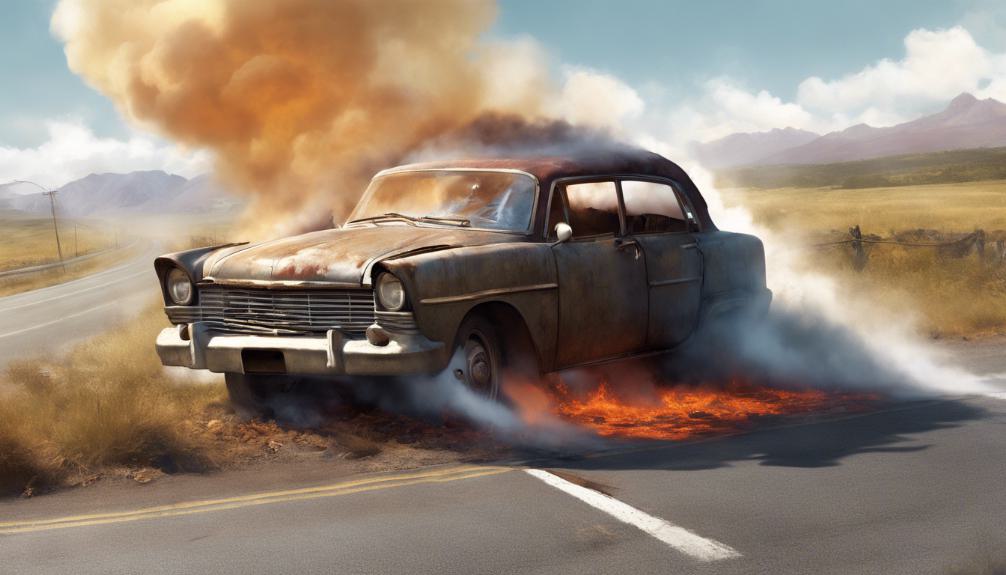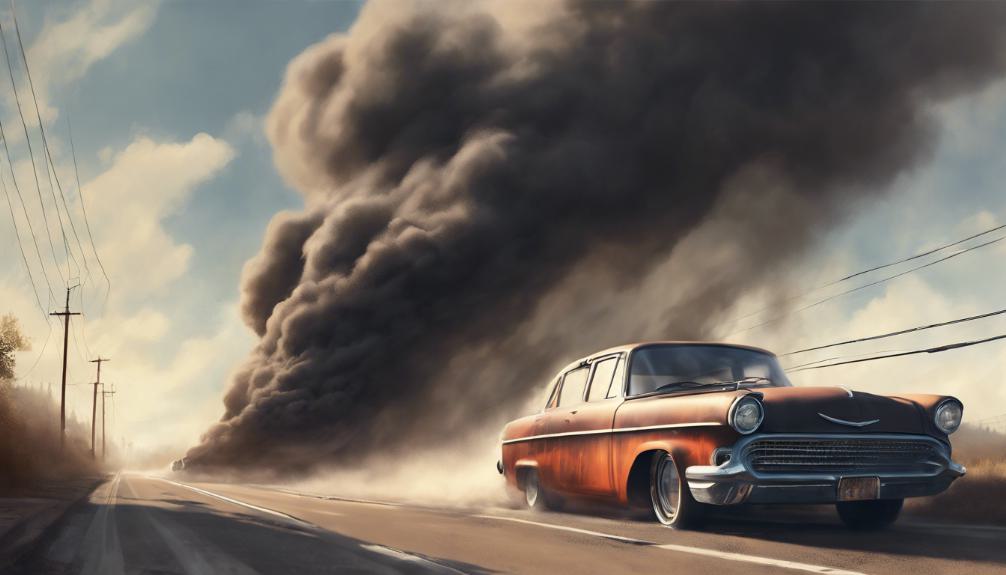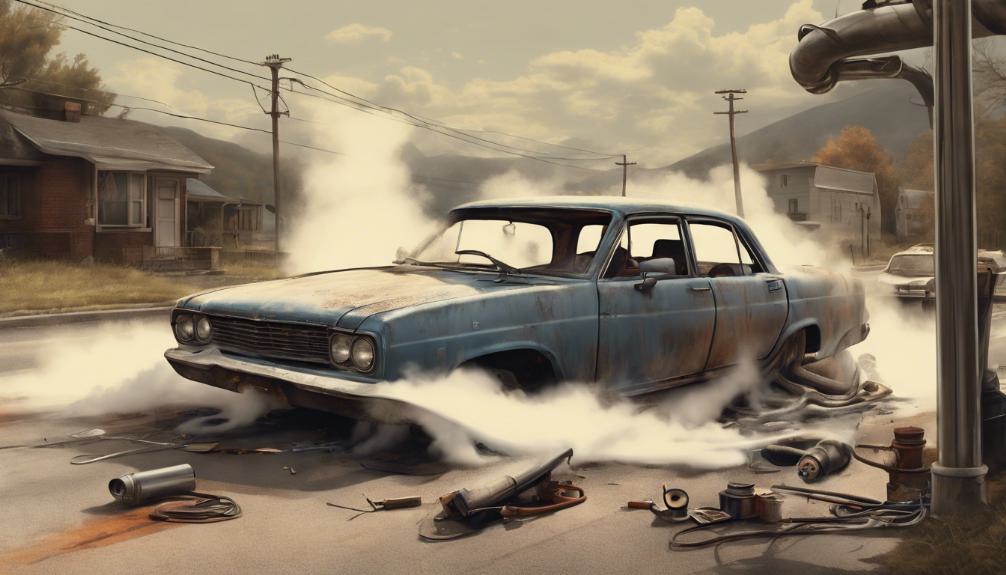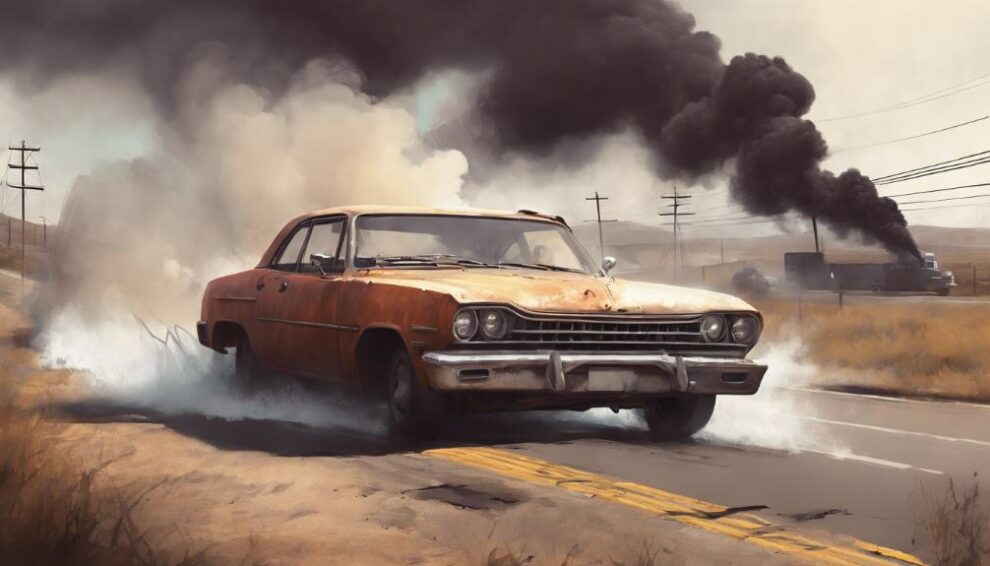Driving with a collapsed radiator hose poses serious risks to your vehicle. Overheating can occur, leading to engine damage like warped cylinder heads or blown gaskets.
The impaired coolant circulation can stress engine components, increasing the chance of failure. Safety hazards on the road may arise, with sudden breakdowns possible.
Prompt repair is essential to prevent costly engine damage. Guarantee a smooth driving experience by addressing this issue promptly to avoid further complications.
Learn more about the risks associated with driving with a collapsed radiator hose by exploring the impact on engine performance and potential repair requirements.
What You Need to Know
- Engine overheating risk due to impaired coolant circulation.
- Potential for critical engine damage and breakdown.
- Safety hazards on the road from sudden breakdowns.
- Increased cost from repairs or engine replacement.
- Prompt attention crucial to prevent severe consequences.
Engine Overheating and Damage

When driving with a collapsed radiator hose, you risk causing engine overheating and potential damage to internal components.
The collapsed radiator hose can restrict the flow of coolant to the engine, leading to inadequate cooling.
As the engine temperature rises, the risk of critical damage, such as the warping of cylinder heads and damage to gaskets, increases.
One important component affected by overheating is the internal coil spring within the engine.
This spring plays a crucial role in maintaining proper engine function and can be compromised if the engine overheats due to a collapsed hose.
If the engine overheats significantly, it can lead to severe engine damage, necessitating costly repairs or even a full engine replacement.
Ignoring the warning signs of a collapsed radiator hose and continuing to drive under these conditions can result in catastrophic engine failure, potentially causing engine seizure.
Addressing a collapsed radiator hose promptly is essential to prevent irreversible damage to the engine and ensure the safety and longevity of your vehicle.
Coolant Circulation Impairment
Driving with a collapsed radiator hose hampers coolant circulation, which is detrimental to the engine’s cooling mechanism.
The radiator hose collapse restricts the flow of engine coolant through the cooling system, impeding its ability to regulate the engine’s temperature.
As a result, the engine coolant can’t effectively carry away the heat generated during combustion, leading to potential overheating issues.
This inadequate coolant circulation can cause the engine to overheat, putting stress on various engine components and risking damage.
Operating a vehicle with a collapsed radiator hose compromises the entire cooling system’s functionality, increasing the likelihood of overheating and engine failure.
To prevent catastrophic consequences such as engine breakdown due to excessive heat buildup, it’s essential to address the Radiator Hose Collapse promptly.
Immediate repair or replacement of the collapsed hose is vital to restore proper coolant circulation and maintain the engine’s efficient operating temperature.
Neglecting this issue can result in severe damage to the engine and compromise the safety and performance of the vehicle.
Potential Engine Breakdown

Facing a potential engine breakdown due to a collapsed radiator hose demands immediate attention to prevent further damage and guarantee your vehicle’s reliability.
Driving with a collapsed hose leads to inadequate coolant circulation, causing engine overheating.
This overheating can result in severe engine damage, such as warped cylinder heads or a blown head gasket. Continued operation with a collapsed hose can ultimately lead to engine breakdown, rendering the vehicle inoperable.
Ignoring the issue escalates repair costs and may even necessitate engine replacement. Timely repair or replacement of the collapsed radiator hose is essential to prevent costly engine repairs and maintain your vehicle’s longevity.
Safety Hazards on the Road
To guarantee your safety on the road, being mindful of the potential hazards associated with driving with a collapsed radiator hose is essential.
When dealing with a collapsed hose, you face risks that can compromise your safety and the well-being of your vehicle.
Here are three safety hazards to watch out for:
- Engine Overheating: A collapsed radiator hose disrupts the proper flow of coolant, leading to inadequate cooling of the engine.
This can cause the engine to overheat rapidly, posing a risk of severe damage and potential breakdowns on the road.
- Loss of Coolant Circulation: The collapse of a radiator hose can result in a loss of coolant circulation, which is crucial for maintaining the engine temperature.
Without proper coolant flow, the engine is at risk of overheating quickly, increasing the likelihood of engine failure.
- Sudden Breakdowns: Operating a vehicle with a collapsed hose can lead to sudden breakdowns while driving, endangering both you and other road users.
Addressing this issue promptly is essential to avoid unexpected safety hazards and ensure a smooth driving experience.
Costly Repairs and Complications

Dealing with a collapsed radiator hose can lead to costly repairs and complications, necessitating immediate attention to prevent further damage.
When a radiator hose collapses, it disrupts the flow of coolant to the engine, causing it to overheat.
This overheating can result in severe engine damage, such as warped cylinder heads, damaged gaskets, or even a cracked engine block.
Ignoring the signs of a collapsed hose may lead to coolant leaks, reduced engine efficiency, and an increased risk of complete engine failure.
The repercussions of driving with a collapsed radiator hose extend beyond just the immediate inconvenience – they can result in significant financial implications due to the need for extensive repairs.
Addressing this issue promptly is critical to prevent these complications and ensure the longevity and reliability of your vehicle’s engine.
Don’t overlook the warning signs of a collapsed radiator hose to avoid the costly repercussions that can follow.
As an Amazon Associate we earn from qualifying purchases.










